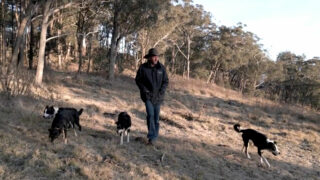Six CEOs share their advice for ensuring success in executive-level transitions between the commercial and social purpose sectors.
The Australian social sector has seen significant policy change in the last few years. Organisations are under growing pressure to compete in the open market as government transfers commercial risk. It is an incredibly challenging time in which to operate.
In response, social purpose organisations are adjusting their funding models and the sophistication of their service delivery to emphasise compliance and customer-centricity, and are working more intensively with questions of scale, efficiency and branding. As part of this transition, they are also increasingly appointing commercial executives into CEO and management positions to complement existing capabilities and draw upon new competencies, experience and language from the commercial sector. In this article, we share the practical wisdom of six experienced CEOs. We look at why this appointment phenomenon is happening, what the benefits and challenges are, and how to achieve successful outcomes.
Of the six leaders interviewed, all but one has moved from the commercial to the social purpose sector, and all of them have had successes and failures hiring executive-level ‘transitioners’. Their insights provide a valuable ‘how-to’ guide for chairs, directors and CEOs recruiting for leadership positions.
The six CEOs interviewed were:
- Eric d’Indy, Westmead Medical Research Foundation
- Grant Millard, Anglicare Sydney
- Andrew Richardson, House with No Steps
- Catherine Stace, Cure Brain Cancer Foundation
- Michael Tizard, Crèche and Kindergarten Association Ltd.
- Catherine Yeomans, Mission Australia.
What’s driving people to transition?
Emotional maturity comes up quickly as a reason why commercial executives are moving. As Catherine Yeomans sees it, executives who successfully enter the sector have by and large “reached an inflection point in their career”.

“They have stopped and asked themselves the big questions about what they want to do with their lives,” says Yeomans.
The language that candidates use varies, according to the CEOs. For some it is expressed as being of service, for others making a difference. The common theme, agree the CEOs, is that for successful transitioners social purpose has joined, and importantly not replaced, criteria like professional challenge, and sufficient financial reward.
Benefits for the organisation
A key benefit of hiring individuals from the private sector is the commercial skills they bring, in particular financial, operational and risk management competencies. Grant Millard explains, “having those commercial skills honed brings a stronger drive for transparency, accountability and performance.”

For larger organisations this is critical as they manage scale combined with complexity. As Yeomans underscores, “At Mission Australia there’s 3,800 staff, 500 different contracts, and properties right across Australia. Some commercial people have transferable experience that is broader and deeper than we need. So long as the fit and commitment is right, we get more bang for our buck.”
This also applies to marketing and sales skills, as the pressure grows to get more sophisticated in relationship management, brand building, and customer-centric services. As Eric d’Indy explains in relation to a recent executive hire, “We were looking specifically for someone who could bring the rigour and experience from sales in the commercial sector. That’s not training that you get in the non-profit sector.”
Another key benefit that Catherine Stace contends is that commercial executives are of value in leadership positions because they’ve established networks which support their professional and personal development. “They tend to be stewarded in their own lives and careers, and the impact of this is exponential far beyond the value of hiring one executive,” she says.

A number of the CEOs noted that another benefit commercially trained professionals often bring is a very helpful mindset around profitability and outcomes, and contrary to popular belief, they do this with a firm standing in their values.
It’s a point that is close to Millard’s heart. He moved from what many would see as the ‘dark side’ at Coca Cola to CEO of Anglicare Sydney. “I’ve been a Christian for a long time and my ethical framework always applied in my corporate life,” he explains. “This wasn’t about slamming the door on the evil corporate world. Not at all.”
Andrew Richardson, who moved from a high end consulting firm to successfully lead House with No Steps, explains how his Board expressed it at the time of his recruitment. “They went out to hire for a business leader,” says Richardson. “They said this is a complex organisation. We’ve got sector knowledge, but we don’t have business nous and leadership. The catch cry was business leadership with heart.”
Challenges in the transition
Bringing commercial executives into the social sector isn’t without its challenges. First and foremost among these is the nature of the social purpose ecosystem that can seem ‘less rational’ and more complex to influence. As one example of this, explains Andrew Richardson, “we have a risk averse government sector which creates a more constrained environment. In a free market [the commercial system], if you think something isn’t working then it’s a business opportunity.”

In the social purpose environment, Richardson says, “it’s frustrating and requires a different problem solving approach.” At the same time he emphasises, “we don’t want to adapt by hiring people who are comfortable within the system otherwise you’ll never change the system. We need that level of frustration and discontent because it is good at creating change.”
The social purpose environment is also, somewhat famously, more people-centric and as a result requires stronger interpersonal skills and emotional intelligence. As Yeomans confides “it was explained to me very early on by a senior person in our organisation – and I’m very appreciative of it – that we are a human services organisation, we are a people organisation. Everything that we do needs to be spoken about and explained through the lens of the people we work with (our clients) and our staff.” .
For Millard this means a different kind of management style is required. It’s a move from more of a directive style to a consultative one. He says, “In the community services sector, top down doesn’t work because you are so dependent on the investment of stakeholders and volunteers. You have to consult, you have to engage, stakeholders have to be invested.” From a personal perspective says Stace, “It’s a lot less about shining on your own”.
This has an impact on managing service provision. As Millard relays, because of the employees’ passion for their job, there is a culture of assuming excellent service provision. The challenge is the growing demand to prove outcomes, and a real need to do so. This creates tension, Millard says, because “to ask the question (about the impact of services) is offensive. People think you’re saying ‘You don’t trust me’.” Moving to a perspective where service outcomes and measurement is embraced is in his words a “huge change exercise”.
Completing the picture is the degree to which resource constraints surprise commercial executives who move across. “Commercial executives come with expectations that they’ll be supported with all that a corporate would provide in terms of systems, processes, structure, and training,” argues Stace. When they move to us, “part of their role is to contribute to creating this and provide advice and stewardship.”
As Yeomans emphasises, “We’re not multi-layered. You might be writing the report yourself. But more significantly you’ll also have tougher decisions to make because there are fewer resources.”
So how do you manage these opportunities and issues when you are seeking new talent for your organisation?
It starts with ‘know thyself’
Making this transition requires relentless honesty. Knowing thyself, and the self-awareness that this implies applies equally on the organisational side as it does to candidates. As Michael Tizard, whose working career has been entirely in the social purpose sector, puts it, “People may have made a decision to move their career into the social sector, and this may have been a cathartic process for them. That doesn’t mean they are a match for the organisation.”

Stace agrees. “Think about who you want to be as an organisation and manage towards that. Do it slowly and test. Don’t recruit too many corporate people at once, or try to change faster than your people or culture can take, and don’t compromise your mission or values.”
Millard’s warning is, “if in doubt, don’t. The cultural damage you’ll do will create a rod for your own back.”
A job in the sector is challenging, so candidates need to take the time for self-reflection and research so that they know what they’re getting themselves into. Richardson points out, “it’s really easy [for candidates] to come across arrogantly – ‘I’m a corporate success, this will be a doddle’”. His view, however, and one shared by all the CEOs, is that “the degree of difficulty is much higher, pound for pound, than a role in the commercial sector.”
Yeomans explains how she deals with this in interviews. “I impress upon them that this job is as busy, if not more so, as any other job. This isn’t the twilight of your career where you give everyone the benefit of your wisdom, sit back and leave at 5 o’clock. If you have the idea that ‘I’m a little bit tired so I think I’ll go to the not-for-profit sector’, that’s not going to work. At all.”
In a smaller organisation, adds d’Indy, there are fewer resources. “So you really must have the passion to drive harder.” In many organisations it is not the gentle experience people might imagine either, Stace points out. “There’s a perception that the non-profit sector is a soft environment; that you are going to be looked after, you are going to be nurtured. But the reality is quite different. Charities can be very harsh environments.”
Successful transitioners have had lots of conversations with people in the sector, and have worked out exactly what they’re after, what they’ll gain, and where they need to go to get it. They really know what their core values are and they’ve thought about how the job will sustain their interest and sense of accomplishment. They have also assessed realistically what they need financially and have negotiated this with their families. Tizard summarises, “it’s not enough to ‘want to make a difference’. It’s about understanding your own behaviours and motivations.”
Have a consistent, open and thorough recruitment process
“The recruitment process is key to success”, explains Stace. “Know the skills, mindset, values and qualities you are after. Then screen for people with fire in their belly and light in their eyes.” Millard recommends “design a process that assesses emotional intelligence accurately.”
“Start with a process that sets up an even playing field by advertising internally and externally,” says d’Indy. He suggests “if you are using a recruitment firm, choose someone with a track record of placing transitioners who has a deep understanding of your organisation and the sector more broadly”.

As d’Indy warns, “most recruiters will give you the ‘safe bet’. What I love about the recruiters I worked with is they took risks to propose a candidate that didn’t have any fundraising experience, had never done a job like that. I took a risk and the candidate took a risk because the match was there.”
To mediate these risks, have a multi-stage interview process that includes formal and informal meetings with a diverse selection panel with high emotional intelligence (EQ). “I look for panelists who are good at reading people and the non-verbal cues,” says Millard.
Delve deep into the candidate’s motivations because as Millard warns it’s easy to be blinded by the ‘halo effect’ of a candidate’s experience. Of one hire that didn’t go to plan, he says “we wanted a skillset so much that we didn’t see everything else around it”. Richardson confesses “to some extent we try and turn people off and see what happens”.
In d’Indy’s view the whole selection process is about getting to know each other and building trust. “I like to take people out of their space and have some informal time to talk,” he says.
For other leaders this involves catch-ups with prospective peers and often setting aside time for candidates to meet their potential clients.
Value and screen for emotional maturity
As a result of the people-centric nature of the sector, transitioning successfully into a social purpose organisation takes resilience and emotional maturity. Transitioners need patience and excellent influencing and interpersonal skills. They will have to counter a perceived lack of credibility in the complex and more resource-stretched culture. The consensus is that they’ll need higher EQ and spiritual intelligence (SQ) than they ever have before.
These are not just superficial skills as Richardson underscores. “You have to have an innate respect and regard for other people and truly value them to succeed fully in the type of work that we do”. In Tizard’s view “the dangerous practitioners in our industry are those with low EQ, low boundaries and low self-insight”. In the recruitment process, this means being clear that you require more from candidates than their skills. And don’t malign the mid-life crisis. In fact, as d’Indy points out “it’s really important they’ve gone on the journey”.
Keep an open mind
Managers need to be open to hiring from any sector. As Catherine Yeomans puts it, “I’ve never recruited with the attitude: ‘I want someone from the outside’. I’ve said ‘I am happy and open to consider external and sector experience and I’m putting them side by side’.” For Stace “if you get the right fit, it doesn’t matter what sector people have come from”.
This open mindset applies as much to the interviewing process as it does to the onboarding process. As Millard shares, “You will make less than ideal hiring decisions once in a while”.
The counsel from all the CEOs is, don’t taint all people with one experience. If you hire a career transitioner and it does not work out, don’t give up on all transitioners because one was too arrogant or had the wrong attitude. “Don’t be deterred,” Millard says, “Review and reflect on your processes”.
Be willing to be stretched
“CEOs must understand the value of being challenged,” argues Stace, a sentiment strongly echoed by the others. As she says, “Welcoming feedback means that when the commercial executive tells you this is all the stuff you’re doing wrong, your response should be ‘Great! I’d pay $50k for a consultant to come in and tell me all this’.”
For d’Indy it’s about the CEO having self-confidence and a sense of service. “You are there to provide the organisation that you are entrusted with the best potential to succeed. When you get really good people they stretch you. It forces the contest of the best ideas. They challenge you and you learn.” For d’Indy, as for Stace, if CEOs are truly confident in their ability, they will embrace and encourage the challenge.
Richardson’s counsel is to make sure you get candidates to write down what they notice in the first instance, mine that for value and act on it in good time.
Recognise it as change management – the transition doesn’t stop
According to Richardson, “Hiring someone is a major change program and all the change management theory says the more you work things through upfront, the better the results.” For the leaders interviewed this means have a high quality induction, orientation and onboarding program, and prepare and support the wider staff.
On the organisational front, Stace says, “be prepared for your organisation to change and have a strategy for integration. The culture needs to foster openness. Have processes and structures in place to guide the culture so that people feel valued no matter what their background is.” The job of the leader, contends Millard, is to ask, “How can I support my staff to deliver across culture and conversations?”
For d’Indy this means adopting a ‘one team, one goal’ approach. His viewpoint is “you can all be high performing on your own and we’ll never be a great organisation.” What we’re after is, he says, “an understanding that we’re all equally skilled. No one is more valuable. And more than this, everyone needs to find a way to support each other. This is not about the person from the corporate sector knowing it all.”
From an induction and orientation point of view, the CEOs talked about getting candidates to the point where they understand the business, people, concepts, systems, and culture. Richardson emphasises that leaders need to be careful not to assume that transitioners can manage the change alone or quickly. It has to be “part of the leaders role”, he says.
It’s a point echoed by Tizard in relation to the role of the Chair and Board for CEO hires. In his case the Chair hired a coach to facilitate the onboarding. “It meant a structured approach including preparing KPIs. It contributed to an effective relationship between the Chair and me, which is a critical success factor for a CEO hire.“
The final piece of advice is one echoed by Millard, Yeomans and Richardson and relates to the importance of keeping employees close to the organisation’s mission. It is vital, they argue, to have executives regularly visit the services, the staff and the clients of the organisation. “Beware the ivory tower of head office,” counsels Yeomans. “It’s important not to get complacent about why you’re here.”
Conclusion
Making executive level transitions work takes time and self-awareness from organisations as well as candidates. While the occasional failed transition is inevitable, the likelihood is greatly reduced by having brave conversations, being reflective about assumptions, and through solid recruitment and on-boarding processes. Getting executive transitions right opens social purpose organisations up to a diverse candidate pool that contributes to their ability to respond to the increasingly competitive pressures they face. This must be done in a way that reinforces their values and enhances their ability to deliver their mission.
Article by Elise Sernik and Barb Barkley, Leadership Space, with Melissa Macpherson, People for Purpose.
Want more?







